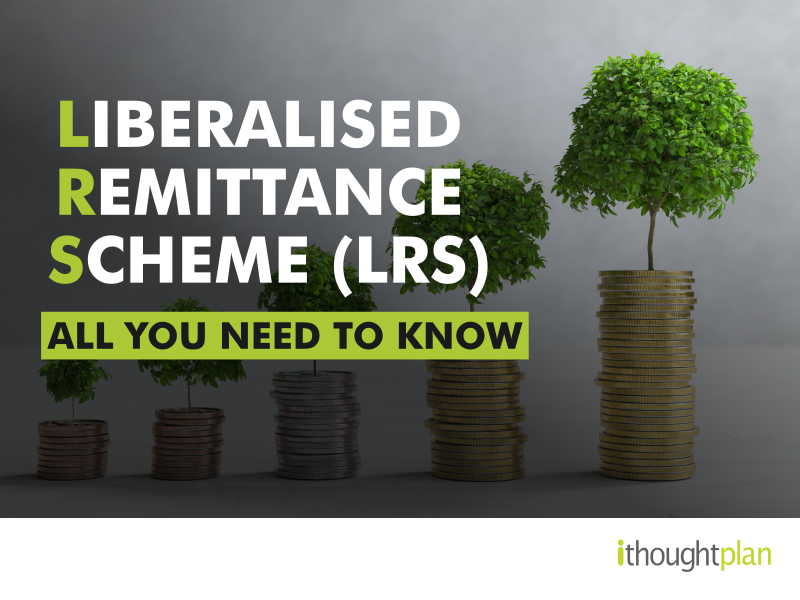
Are you a Resident Indian looking to explore international opportunities or make investments abroad?
Or perhaps you’re a curious traveller wanting to experience the world beyond Indian borders? Whatever your motivation, the Reserve Bank of India’s Liberalized Remittance Scheme (LRS) provides a simple and hassle-free way to transfer funds for permissible current and capital account transactions.
In this blog, we’ll dive deep into the details of LRS, its permissible transactions, limits, and restrictions, so you can make informed decisions about your cross-border financial activities.
So, buckle up, grab your passport, and let’s explore the world of LRS together!
What is LRS?
Under the Liberalised Remittance Scheme, all resident individuals, including minors, are allowed to freely remit up to USD 2,50,000 per financial year (April – March) for any permissible current or capital account transaction or a combination of both without any RBI permission.
What is the LRS Limit?
The LRS limit has undergone numerous updates. The remittance ceiling is $250,000 as of right now. The number of transactions that may be conducted is unrestricted, but the total amount of any foreign exchange transactions must not exceed $250,000.
What are the permissible current account transactions under LRS for Resident Indians?
The following are permissible current account transactions under LRS:
-
-
- Private visit (other than Nepal & Bhutan)
- Gift or Donation including rupee gift to Non-Resident Indian (NRI)/ Person of Indian Origin (PIO), who is a close relative.
- Emigration
- Overseas business trips
- Medical treatment abroad
- Pursuing studies outside of India
- Going outside India for employment
- Maintenance of close relatives abroad Any other current account transactions which are not prohibited
-
What are the permissible capital account transactions under LRS for Resident Indians?
The following are the permissible Capital account transactions under LRS:
-
-
- Opening of foreign currency, a/c abroad with a bank outside India
- Purchase of property abroad
- Investments in shares, securities, Mutual Funds, etc abroad
- Setting up Wholly owned subsidiaries (WOS) and Joint Venture (JV) abroad for Bonafede business subject to stipulated terms and conditions
- Extending loans in INR to NRIs who are relatives as defined in the Companies Act, 2013.
-
The regulations make it quite clear that one can only send foreign exchange (forex) for transactions that are either current account transactions, capital account transactions, or a mix of both that are allowed.
The LRS regulations will classify investments in stocks, real estate, and other types of investments made overseas as capital account transactions. According to LRS regulations, only specific capital account transactions are permitted, such as opening a foreign currency account at a bank, buying real estate abroad, and making investments abroad, such as buying shares, mutual funds, and debt instruments, among other things.
Importantly, the LRS regulations permit an investor who has made international investments in shares and mutual fund schemes to keep and reinvest the money generated in those nations, unless the investment was made directly abroad. The investor doesn’t need to repatriate the accrued interest or dividends on the deposits and investments made abroad.
Can the exchange facility be availed in excess of USD 2,50,000/-?
Resident Individuals may avail facilities more than the limit prescribed for the purpose of emigration, medical treatment and studies outside if it is so required by the country of emigration, a medical institute offering treatment or the university respectively but subject to certain conditions. In other cases, prior RBI permission is required to remit funds exceeding USD 2,50,000/-.
Percentage of TCS collected
On any amount remitted abroad with a foreign bank, a TCS of 20% will be deducted. Before this, a TCS of 5% was applicable to foreign outward remittances of more than ₹7 Lakhs. Now, apart from education and medical treatment, there will be no threshold limit for other instances of remittances.
What is not permitted under LRS?
The remittance facility under the scheme is not available for the following purpose:
-
-
- Remittance for any prohibited activities such as margin trading, lottery, etc.
- Remittance for purchase of Foreign Currency Convertible Bonds issued by Indian Companies in the overseas secondary market.
- Remittance for trading in foreign exchange abroad.
- Capital Account remittances, directly or indirectly to countries identified by the Financial Action Task Force (FATF) as “Non-co-operative countries and territories”, from time to time.
- Remittance directly or indirectly to those individuals and entities identified as posing a significant risk of committing acts of terrorism as advised separately by the RBI to the banks.
-
Lastly, is LRS in addition to the use of International Credit & Debit Card by a resident?
Yes, LRS is in addition to the use of an International Credit Card. There is no monetary ceiling fixed by RBI for remittances by use of an International Credit Card towards meeting expenses while such a person is on a visit outside India.
However, the use of an International Credit Card for payment in foreign exchange in Nepal and Bhutan is not permitted. However, the use of debit cards for foreign transactions is subject to the guidelines issued by the RBI under the LRS.
Final Thoughts
Liberalised Remittance Scheme is a platform introduced by RBI that simplifies the process of remitting funds outside India for Residents up to the extent of USD 2,50,000 without having a need to seek approval from the RBI.